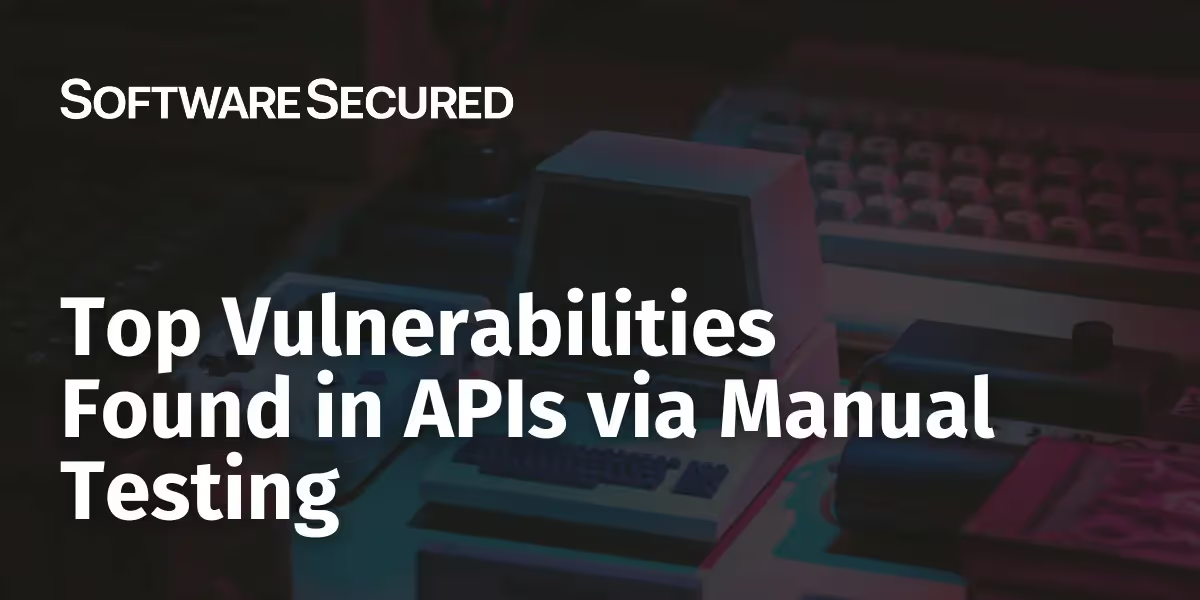Mobile Penetration Tests: The 3 Major Mobile Security Controls
Learn more about the differences, benefits, and challenges for mobile penetration testing while exploring the 3 major security controls.
The ubiquity of smartphones and tablets has transformed how organizations engage customers, employees, and partners. From banking apps to telemedicine platforms, mobile applications now handle highly sensitive data—personal identification numbers, health records, payment credentials, and proprietary business information. Yet for all their convenience, mobile apps also introduce unique attack surfaces that differ significantly from traditional web or network‑centric vulnerabilities.
High‑profile breaches over the last few years, such as the 2021 Instagram data scrape, underscore how attackers exploit flaws in mobile storage, authentication, and network communication to exfiltrate massive data sets. In regulated industries—finance, healthcare, government—noncompliance with data‑at‑rest encryption or encrypted transport can trigger hefty fines under GDPR, HIPAA, or PCI‑DSS.
That’s where a robust mobile penetration test comes in. Unlike automated vulnerability scanners, a manual mobile pentest simulates the tactics of real attackers who chain together seemingly minor weaknesses into full‑blown exploits. In this article, we’ll dive deep into the three foundational security controls every mobile pentest must validate, illustrate how each control translates into actionable findings, and show you the business‑impact metrics that resonate with CTOs, VPs of Engineering, and Compliance Directors alike.
.avif)
Control #1 – Secure Data Storage
What It Is
At its core, secure data storage ensures that all sensitive information held by the app—user tokens, personal data, cryptographic keys—is encrypted whenever it rests on the device. On iOS, developers leverage the Keychain or the Secure Enclave; on Android, the Keystore API coupled with hardware‑backed encryption modules. Beyond platform APIs, best practices include using encrypted SQLite databases, avoiding plaintext logging, and never embedding secrets directly in code.
Why It Matters
Attackers who gain physical access to a device—or who trick users into installing malicious profiles—can escalate privileges (jailbreak/root) and extract local files. Without encryption, an adversary can dump databases or pluck cached files, immediately exposing personally identifiable information (PII), authentication tokens, or even backend API keys. Under GDPR, each exposed record can trigger fines of up to €20 million or 4% of global turnover—whichever is higher.
Pentest Focus
A comprehensive mobile pentest will:
- Inspect persistent storage: Dump and analyze the app’s sandbox directories to identify unencrypted files or logs.
- Validate Keychain/Keystore usage: Confirm that sensitive items are stored with strong access controls (e.g., accessible only when unlocked).
- Detect hard‑coded credentials: Search binary blobs and resource files for embedded API secrets or private keys.
- Test jailbreak/root scenarios: Simulate elevated‑privilege environments to ensure data remains encrypted and inaccessible.
Business Impact & Compliance
For Compliance Directors, a finding of unencrypted PII directly maps to SOC 2 CC6 (Data at Rest Encryption) and PCI‑DSS Requirement 3. CTOs gauge the severity by “number of unencrypted sensitive objects found,” while VPs of Engineering track remediation velocity—average time to encrypt or properly store each data item.
Control #2 – Strong Authentication & Authorization
What It Is
Authentication verifies an end user’s identity; authorization ensures they can only perform allowed actions. For mobile apps, this goes well beyond a username/password prompt. Today’s best practices include:
- Multi‑Factor Authentication (MFA): Combining something the user knows (password), has (device, one‑time code), or is (biometric).
- Secure token storage & rotation: Using short‑lived JSON Web Tokens (JWTs) with refresh tokens, stored in secure storage.
- Server‑side authorization checks: Never trusting client‑side controls; all role‑based access control (RBAC) decisions double‑checked on the backend.
Why It Matters
Weak authentication or incomplete authorization checks open the door to account takeover, privilege escalation, and unauthorized data access. Consider a banking app where a failure to validate the “admin” flag server‑side would let any authenticated user change another user’s PIN. The result? Fraud, brand damage, regulatory penalties under SOX or GDPR, and substantial remediation costs.
Pentest Focus
During a mobile pentest, simulated attacks will include:
- Token replay & manipulation: Capturing authentication tokens and attempting to replay or modify them to access others’ accounts.
- Bypassing “Remember Me”: Testing if long‑lived session cookies survive app reinstalls or device resets.
- Tampering with JWT claims: Modifying base64‑encoded payloads to escalate roles.
- Force MFA downgrade: Intercepting or replaying authentication flows to see if MFA enforcement can be skipped.
Business Impact & Compliance
Compliance teams tie findings to SOC 2 CC4 (System Operations) and GDPR Art. 32 (Processing Integrity). CTOs use metrics like “number of broken auth flows” or “average token lifespan” to track risk, while VPs of Engineering monitor remediation slippage—how many auth‑related fixes remain open at any given sprint boundary.
Control #3 – Secure Network Communications
What It Is
Every call your mobile app makes to backend APIs must travel over encrypted channels, typically TLS 1.2 or higher. Beyond basic HTTPS, best practices include:
- Certificate pinning: Locking the app to a known, valid certificate or public key to prevent Man‑in‑the‑Middle (MITM) proxies.
- Strict transport security: Enforcing HSTS at the network layer.
- API‑level abuse protection: Implementing rate limiting, schema validation, and WAF protections to block malicious payloads.
Why It Matters
Even if local storage and authentication are airtight, intercepting unencrypted or improperly validated traffic lets attackers read or alter sensitive data in motion. A successful MITM can steal session tokens, inject malicious payloads, or downgrade TLS to a weak cipher—often with off‑the‑shelf tools like Burp Suite.
Pentest Focus
A focused mobile pentest will:
- Evaluate TLS configurations: Scan each endpoint for deprecated protocols (SSL 3.0, TLS 1.0) or weak ciphers (RC4, DES).
- Bypass or disable pinning: Use runtime instrumentation (Frida, Objection) to remove pin checks and confirm traffic interception.
- Fuzz API endpoints: Send malformed or excessive requests to detect improper input handling or DoS vectors.
- Check for fallback channels: Ensure no insecure HTTP or WebSocket endpoints remain.
Business Impact & Compliance
Encrypted transport is non‑negotiable in HIPAA, PCI‑DSS Requirement 4, and GDPR Art. 32. Compliance Directors log “number of endpoints failing TLS checks,” while CTOs track “percentage of traffic covered by pinning.” VPs of Engineering benchmark improvement over time—e.g., reducing weak cipher endpoints from 20% to 0% by Q4.
Beyond the Big Three
While secure storage, strong auth, and encrypted transport form the triad of mobile security, modern threat landscapes demand additional layers:
- App Integrity & Runtime Protection: Techniques such as tamper detection, jailbreak/root checks, and runtime integrity verification ensure the app hasn’t been modified or compromised on the device.
- Supply‑Chain & Dependency Management: Third‑party SDKs and open‑source libraries often introduce vulnerabilities. A thorough pentest evaluates each dependency’s version and known CVEs, plus conducts dynamic analysis of embedded code.
CTOs should view these as “Level 2” controls—critical for organizations handling extremely sensitive data or operating under stringent compliance regimes.
What a Mobile Pentest Delivers for Executives
1. Actionable Findings
Pentest reports categorize issues by severity (Critical, High, Medium, Low) and provide clear remediation steps—code snippets, configuration changes, or architectural recommendations.
2. Risk Quantification
Findings are scored using frameworks like OWASP MASVS or CVSS, but always mapped back to business impact. For instance: “Exposure of 10,000 user tokens (Severity 9.1) could cost an estimated $5 million in breach response, regulatory fines, and brand remediation.”
3. Compliance Mapping
Each finding cross‑references relevant controls: SOC 2, ISO 27001, PCI‑DSS, HIPAA, GDPR. This alignment enables Compliance Directors to demonstrate due diligence to auditors.
4. ROI & Cost Avoidance
Mobile breaches often cost organizations millions in direct fines, legal fees, and customer churn. In contrast, a manual pentest typically runs from $25,000 to $100,000—delivering a 10×–50× return on investment when even a single critical flaw is remediated.
Conclusion
Mobile applications power today’s digital economy—and attackers know it. Automated code scans can catch low‑hanging fruit, but only a manual mobile penetration test validates that your storage, authentication, and transport controls truly hold up under adversarial pressure.
Ready to elevate your mobile security posture? Schedule a comprehensive mobile pentest that goes beyond check‑the‑box scanning. At Software Secured, our experienced testers combine deep platform expertise with real‑world attack methods to deliver actionable findings, risk‑based scoring, and direct compliance mapping—so your team can ship secure mobile apps with confidence.
Get in touch today to learn how our mobile pentests integrate seamlessly into your CI/CD pipeline, reduce time‑to‑remediation, and safeguard your most sensitive data—on every device, everywhere.

.avif)



